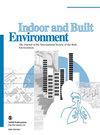从地方保护的角度看中国传统村落的嬗变
IF 2.9
3区 工程技术
Q2 CONSTRUCTION & BUILDING TECHNOLOGY
引用次数: 0
摘要
近来,中国的传统村落得到了多重政策保护和资金注入。这些外部干预在保护传统村落文化遗产、提供发展机遇的同时,也逐渐侵蚀了其内在的适应性循环系统。本研究以 6819 个传统村落为研究对象,揭示了传统村落适应性循环阶段的特征与转换,并描述了这些村落的内在适应性机制。研究结果如下:在适应性特征方面,传统村落的适应性呈现出明显的区域不平衡性。贫困陷阱、探索(r)和赌博陷阱的适应性周期阶段比例最高。传统村落大多处于僵化状态,少数适应性过程在贫困陷阱和探索(r)之间转换,需要新的动力来引导良性循环。在适应性机制方面,传统村落的地域性、流动性与恢复力之间存在显著的负相关关系。内在适应机制逐渐瓦解,陷入锁定陷阱的风险越来越大。本研究为分析传统村落的问题提供了经验证据,并为传统村落地域性保护的长期规划和政策制定提供了建议。本文章由计算机程序翻译,如有差异,请以英文原文为准。
Adaptation of Chinese traditional villages from the perspective of locality preservation
Recently, traditional villages in China have received multiple policy protections and capital injections. While these external interventions protect the cultural heritage of traditional villages and provide opportunities for development, they have gradually eroded their intrinsic adaptive cycle system. This study focused on 6819 traditional villages, revealed the characteristics and transitions of the adaptive cycle stages in traditional villages and described the internal mechanisms of adaptability within these villages. The research findings are as follows: Regarding adaptability characterisation, the adaptability of traditional villages has developed a regionally significant imbalance. The highest proportion of adaptability cycle stages was found in the poverty trap, exploration (r) and gambling traps. Traditional villages are mostly in a rigid state, with a few adaptive processes shifting between the poverty trap and exploration (r), requiring a new impetus to guide positive cycles. In terms of adaptability mechanisms, there was a significant negative relationship between locality, mobility and resilience in traditional villages. Intrinsic adaptive mechanisms gradually disintegrate, and there is an increasing risk of falling into a lock-in trap. This study provides empirical evidence for analysing the issues in traditional villages and offers recommendations for long-term planning and policy formulation of locality protection in traditional villages.
求助全文
通过发布文献求助,成功后即可免费获取论文全文。
去求助
来源期刊

Indoor and Built Environment
环境科学-工程:环境
CiteScore
6.40
自引率
25.00%
发文量
130
审稿时长
2.6 months
期刊介绍:
Indoor and Built Environment publishes reports on any topic pertaining to the quality of the indoor and built environment, and how these might effect the health, performance, efficiency and comfort of persons living or working there. Topics range from urban infrastructure, design of buildings, and materials used to laboratory studies including building airflow simulations and health effects. This journal is a member of the Committee on Publication Ethics (COPE).
 求助内容:
求助内容: 应助结果提醒方式:
应助结果提醒方式:


